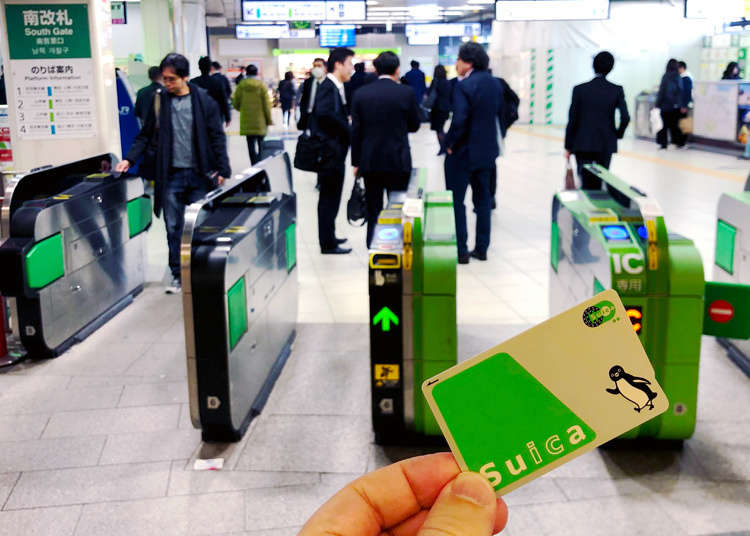
Japan's rail network simplifies travel with IC travel cards like Suica, allowing seamless access to trains and buses, and even purchases, across multiple regions, making it a must-have for efficient and worry-free commuting and shopping.
- Table of Contents
Japan has an extensive rail network operated in different areas by several companies like Japan Railways (JR). JR and other major railway companies have introduced IC cards (rechargeable smart cards) to allow commuters to easily access the transportation system, without worrying about calculating the necessary fare to reach their destination. (In Japan, the ticket is purchased before the ride, and the price changes depending on the distance that will be covered).
One of the most commonly seen IC cards is “Suica,” developed by JR-East, but granting access also to almost all other railways and buses in the Tokyo Metropolitan Area.
If you want to save time and travel without worries, get your Suica card as soon as you arrive in Japan! Learn how a Suica can also save you hassle when buying food, or souvenirs during your visit. If you want to make the best of your Japan trip, read on!
What is Suica?
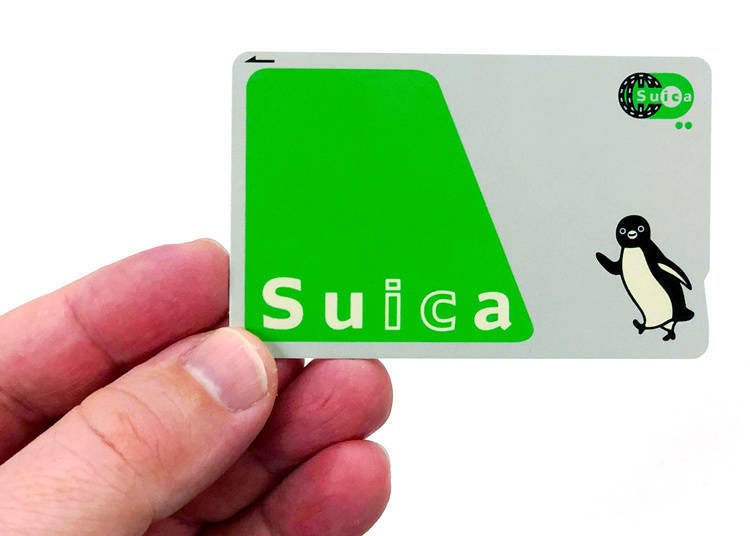
Suica is a prepaid IC card issued by the East Japan Railway Company. You can charge as much money as you want on the Suica (up to 20,000 yen), and then use it to pass through ticket gates with a tap - or to board buses and even subways.
You can also use the card in convenience stores and vending machines. Payments are easy because there is no need to launch an app on your phone or even enter the amount of the purchase.
There are two types of Suica cards: the "standard" Suica for people who live in Japan, and a special Welcome Suica for short-term visitors.
Where can I buy a Suica?
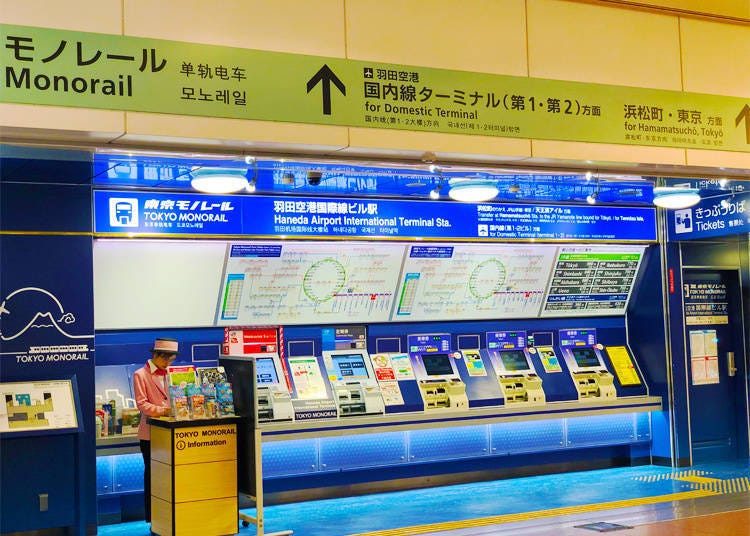
Suica cards can be purchased from ticket vending machines in the JR East stations, in the Suica section, and on any green ticket machine.
You can also get one at Haneda and Narita Airports. You can choose any amount among 1,000 yen, 2,000 yen, 3,000 yen, 4,000 yen, 5,000 yen, and 10,000 yen. (You can also deposit any amount you like up to 20,000 yen.)
When getting a Suica card, you will also need a deposit of 500 yen, which will be refunded if you return your card when you no longer need it.
If you want to add money to your Suica card, you can do it by depositing cash at a ticket machine where the Suica logo (image below) is displayed.

Now that we know what a Suica card is, let’s see how the Welcome Suica differs from the standard one.
- As mentioned above, the Welcome Suica is intended for short-term visitors.
- The Welcome Suica does not require a 500 yen deposit.
- The Welcome Suica expires in 28 days.
- The Welcome Suica is non-refundable.
Where can I buy a Welcome Suica?
The Welcome Suica can be purchased at the JR East Travel Center located in major JR stations in the Tokyo Metropolitan Area, as well as at Narita Airport and Haneda Airport, or from Welcome Suica-dedicated vending machines at Narita Airport Terminal 1, or at the Tokyo Monorail Haneda Airport International Terminal Station.
Note: As of March 28, 2024, "Welcome Suica" cards will be sold exclusively at the following locations, with a limit of one card per person:
・JR East Travel Service Center at Haneda Airport Terminal 3 Station
・Welcome Suica dedicated vending machines at Haneda Airport Terminal 3 Station
Benefit #1: The Welcome Suica does not require a 500yen deposit when acquiring it
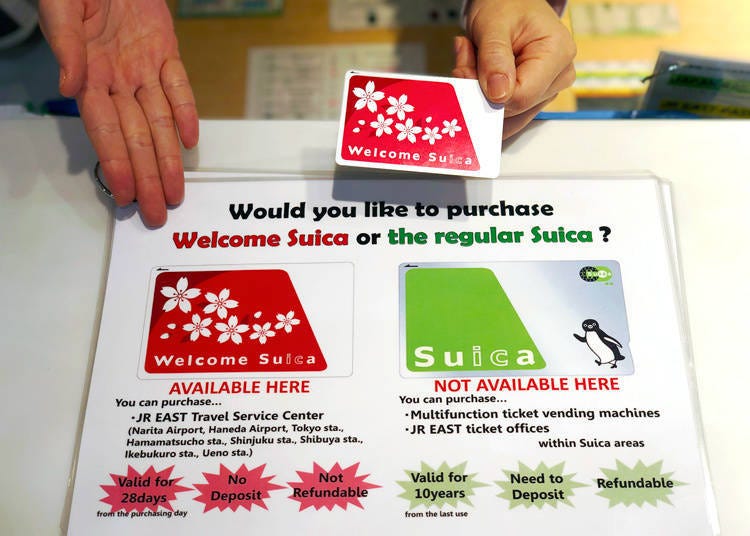
If a tourist decides to use the conventional Suica, they will need to process them at one of the JR East Travel Centers at a JR station or at the airport, in order to get the deposit back. However, the Welcome Suica does not require a deposit, so there is no need to use your time to get a refund.

The Welcome Suica has a beautiful design of white cherry blossoms on a red background, and it makes for a nice souvenir to take back home.
Benefit #2: There is no need to calculate bus and train fares before boarding
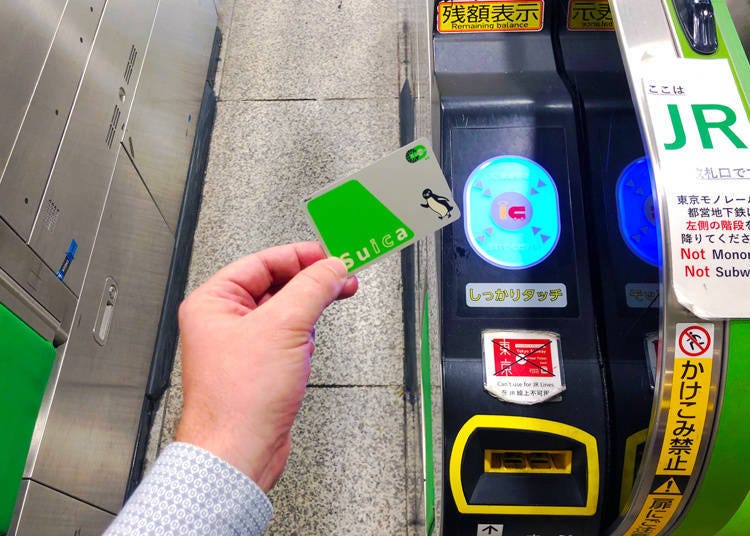
If you want to buy a train or subway ticket without using a Suica, you will need to look at the route map posted above the ticket machines at the station, find your destination, check the fare, and purchase the appropriate ticket, every time you board.
The Suica eliminates that hassle. With a Suica card, you can go through the ticket gates by simply tapping the card over the scanner with the IC mark on it. The scanner can read the card even if it’s within a case, so you don’t have to take it out of your wallet every time you use it.
The fare for trains and buses will be automatically deducted. You won’t need to calculate the amount yourself.
Benefit #3: It can be used not only in Kanto (greater Tokyo) but also on various trains and busses all over Japan
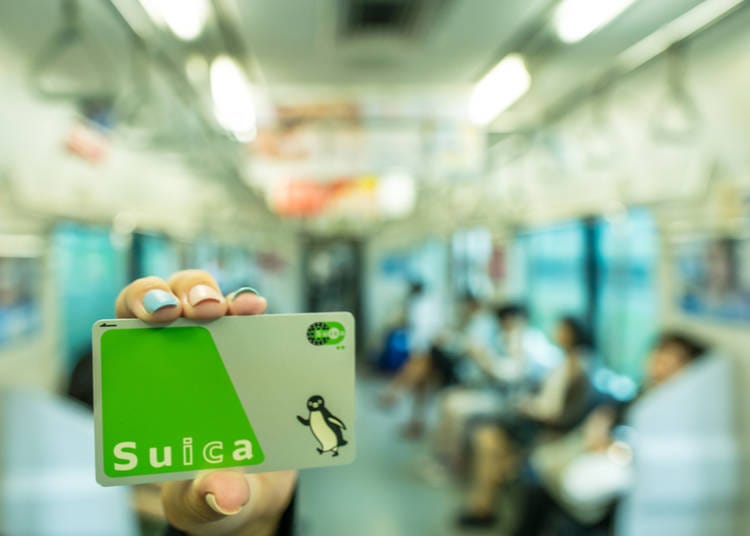
Not only in the Tokyo Metropolitan area but also all over the country. The areas where you can use the Suica are gradually expanding. You can use it at any ticket gate carrying the IC symbol, nationwide.
-
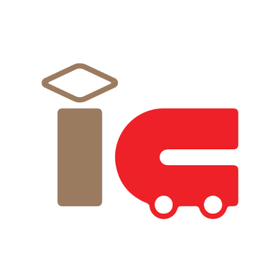 Transportation IC Card National Interoperable Use Symbol Mark
Transportation IC Card National Interoperable Use Symbol Mark
The Suica can be used from Hokkaido to Kyushu in trains and busses covered by other IC cards (Kitaca, PASMO, TOICA, manaca. ICOCA, PiTaPa, SUGOCA, nimoca, Hayakaken, icsca, odeca).
Learn more about the various smart cards used in Japan at https://www.jreast.co.jp/e/pass/suica.html.
Benefit #4: You can use it for coin lockers, in convenience stores, and at vending machines
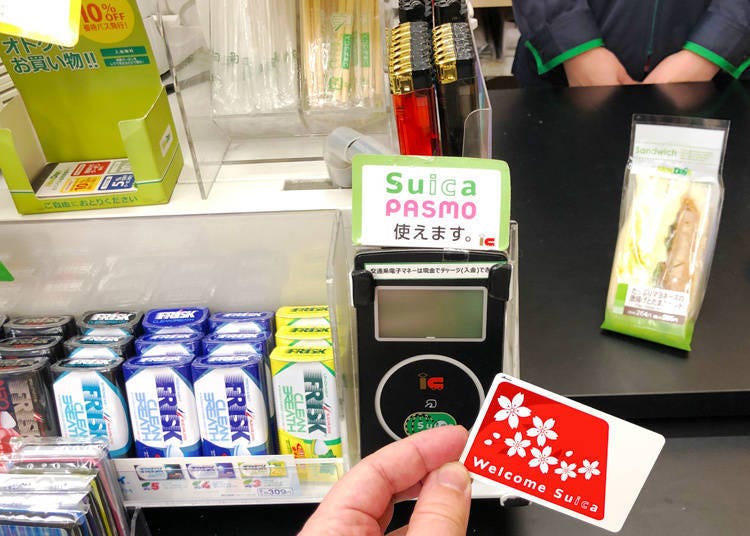
The Suica card can be used in all places and shops carrying the Suica mark, like coin lockers, convenience stores, vending machines, supermarkets, shopping centers, restaurants, and lodging facilities.
You can use the Suica like an electronic wallet, simply by charging the card in advance - making it even more convenient. By Suica alone, you can access trains and buses, and enjoy your shopping, restaurants, and hotels!

You can even buy your coffee on the go, without worrying about bringing cash along!

The Suica card can also be used to store luggage in coin lockers! All you need to do is touch the screen and follow the instructions. You won’t need to remember a specific locker or passcode. Just touch the scanner with your Suica card, and the system will automatically open the locker, making it very easy to use.
For a list of locations where Suica cards can be used, please visit https://www.jreast.co.jp/e/suicamoney/shop.html.
Benefit #5: Suica is compatible with discount tickets
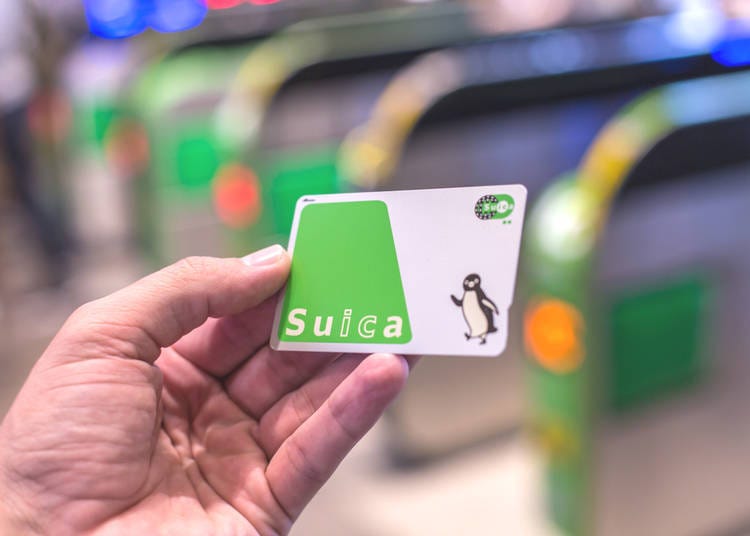
There are various special discount passes in the Tokyo Area. These allow you to enjoy a day-trip to locations outside of Tokyo while saving money. To make this even more convenient, the following offers can be recorded on your Suica card.
The ”Tokyo Metropolitan District Pass (Tokunai Pass)” (760 yen), “Yokohama Minatomirai Pass” (530 yen), “NONBIRI Holiday Suica Pass” (2,670 yen) can be purchased in the stations within the designated area for each pass.
If you purchase a NONBIRI Holiday Suica Pass, you can freely use all the regular and rapid trains on the Rinkai Line and in the designated zones of the Tokyo Monorail lines.
For more information on these area passes and discount tickets, please visit https://www.jreast.co.jp/e/discount_ticket/.
Benefit #6: Partial refund before leaving (regular Suica only)
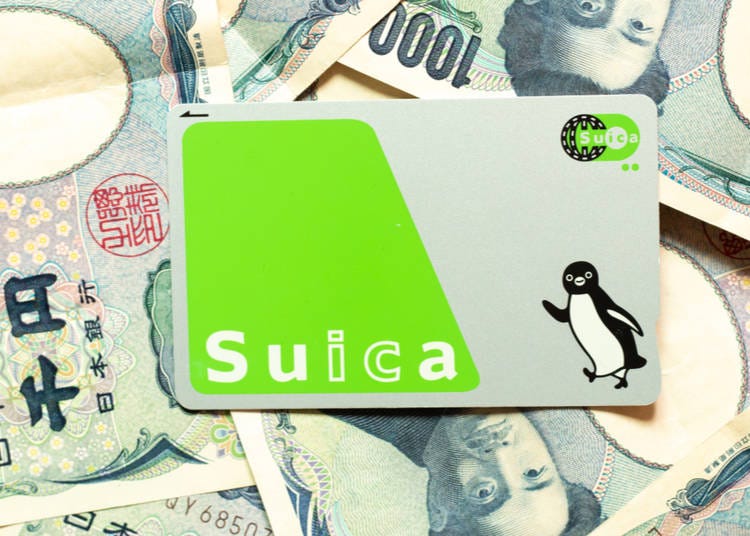
The Welcome Suica is non-refundable, but the regular Suica can be refunded if there is a charge on the card.
With a regular Suica, the amount refunded is obtained by subtracting a commission of 220 yen from the charge balance, and by adding the 500 yen of the initial deposit. If the charge balance is 220 yen or less, only the deposit will be refunded.
Refunds can be obtained at the JR East Travel Centers, in the Suica section. Please note that refunds cannot be processed at stations outside of the JR East lines.
Suica FAQ
- 1. I have a Japan Rail Pass. Do I need a Suica?
- The Japan Rail Pass can be used only on JR trains and Shinkansen (except the Nozomi and Mizuho), but the Suica can be used on trains, subways, buses, and other vehicles operated also by companies other than JR. Plus it’s also convenient to pay at convenience stores and vending machines. It’s the perfect partner for travelers. Suica may be used in places not operated by the Japan Rail Pass, so it’s convenient to have them both.
- 2. Can I use the Suica on the Shinkansen?
- The Shinkansen requires a special ticket. You cannot ride the Shinkansen by Suica alone.
- 3. Can Suica be used in Kyoto and Osaka?
- Yes, it can. Suica cards can be used anywhere the Suica IC card logo is displayed. It can also be used in convenience stores and vending machines outside of the Tokyo area. You cannot use the Suica to travel between Tokyo and Osaka, but you can use it to travel within cities such as Osaka and Kyoto. However, please note that not all areas of Japan have adopted IC cards. In areas where IC cards are not used, it’s necessary to purchase paper tickets. For more information on where Suica can be used, please visit https://www.jreast.co.jp/e/pass/suica.html.
Summary
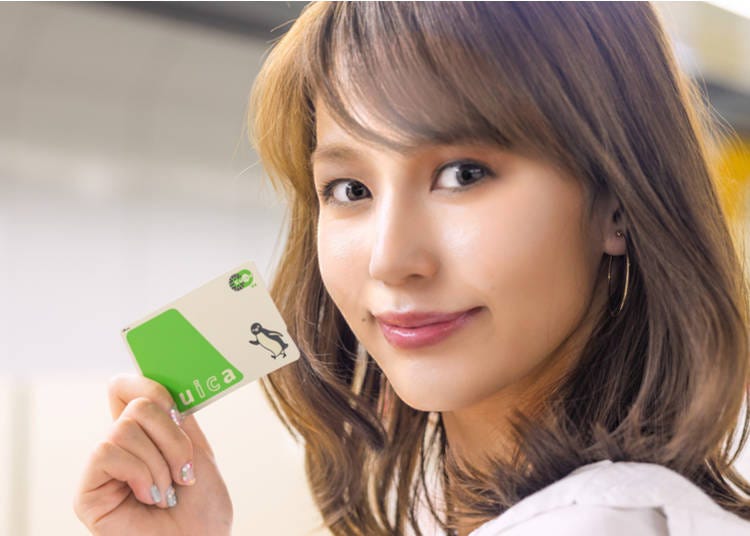
Here we talked about the Suica, a very useful card that can be used both as a ticket and an electronic wallet, while traveling within Japan. We have also looked at the Welcome Suica, particularly recommended to those who are planning on coming to Japan to visit a lot of places, and its differences from the standard Suica.
Make your time in Japan more enjoyable and stress-free with the Suica and Welcome Suica cards!
Buy a Suica online!
Save money and hassle - make your trip extra memorable by getting these useful travel passes ahead of your visit!
*Prices and options mentioned are subject to change.
*Unless stated otherwise, all prices include tax.
Popular Tours & Activitiess
Recommended places for you
-

Kanzenkoshitsuyakinikutabehodai Gyugyu Paradise Sannomiya
Yakiniku
Kobe, Sannomiya, Kitano
-

ISHIDAYA Hanare
Yakiniku
Kobe, Sannomiya, Kitano
-

Kambei Sannomiyahonten
Yakiniku
Kobe, Sannomiya, Kitano
-
Goods

Yoshida Gennojo-Roho Kyoto Buddhist Altars
Gift Shops
Nijo Castle, Kyoto Imperial Palace
-

Jukuseiniku-to Namamottsuarera Nikubaru Italian Nikutaria Sannomiya
Izakaya
Kobe, Sannomiya, Kitano
-
Appealing

Rukku and Uohei
Izakaya
Sapporo / Chitose
-

[Extended Offer!](12% OFF KKday Coupon) Mt. Fuji Autumn Leaves, Powder Snow & More! 15 Best Tours to Experience Japan in Fall & Winter
-

Tokyo City Pass Upgrade: Harry Potter Studio Tour & Top Sights up to 85% Off
by: Guest Contributor
-

How to Get Don Quijote's Exclusive 2025-2026 Winter Gift (+Tax-Free Savings)
-

Keisei × Keikyu 16-Temple Goshuin Tour: Discover Deeper Tokyo & Yokohama
by: Guest Contributor
-

A Travel Game Changer! Go Hands-Free Between Tokyo and Kyoto with LUGGAGE EXPRESS by JTB and JR Tokai
by: Guest Contributor
-

Simply Oishii Wagashi School Discover Japanese Culture Through Wagashi: A Hands-On Experience!
by: Guest Contributor
-

7 Iconic Hokkaido locations that will make your Instagram shine
by: Himanshi Shah
-

Japan's Bath Culture: Tips You Should Know!
-

Oga Aquarium GAO Guide: Fish, Polar Bears and...Godzilla?
-

3 Popular Hotels Near Tokyo Station With Stunning Views
-

Tokyo Train Map: Your Essential Guide to Subways and Railways
-

6 Most Scenic Spots Around Mount Yotei, Hokkaido: Gorgeous Sunflowers & More!
- #best sushi japan
- #what to do in odaiba
- #what to bring to japan
- #new years in tokyo
- #best ramen japan
- #what to buy in ameyoko
- #japanese nail trends
- #things to do japan
- #onsen tattoo friendly tokyo
- #daiso
- #best coffee japan
- #best japanese soft drinks
- #best yakiniku japan
- #japanese fashion culture
- #japanese convenience store snacks
















